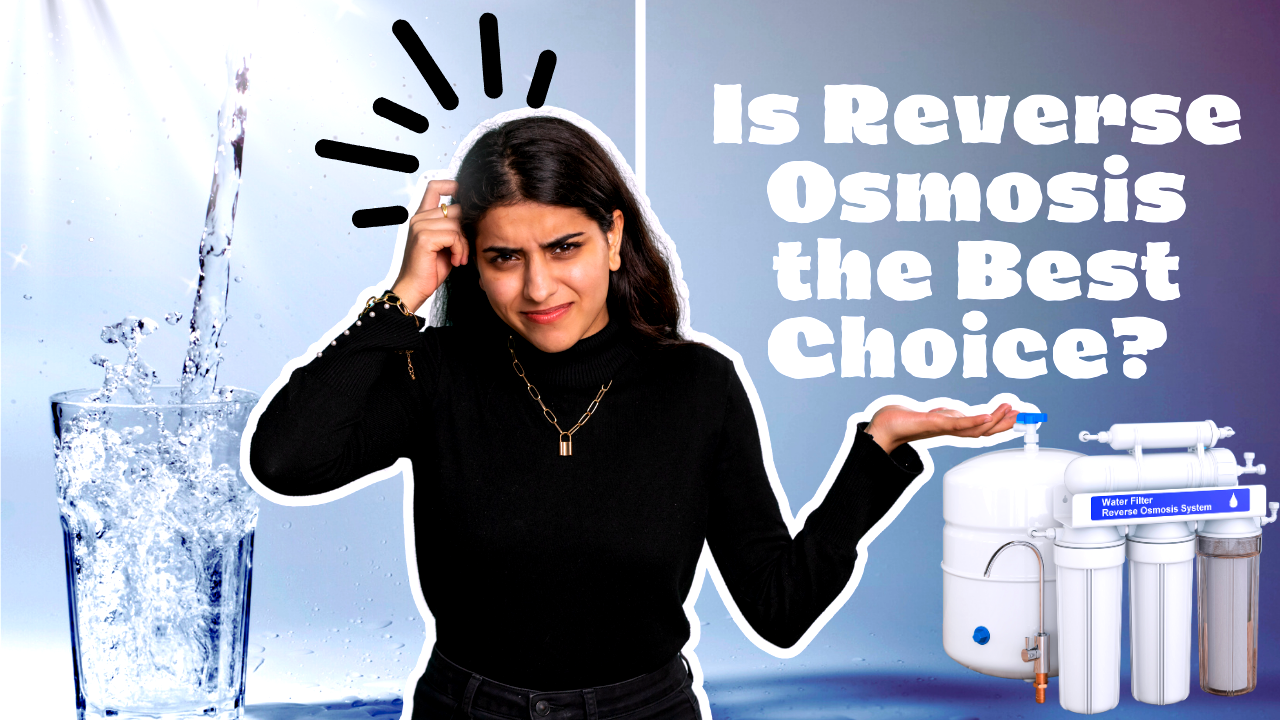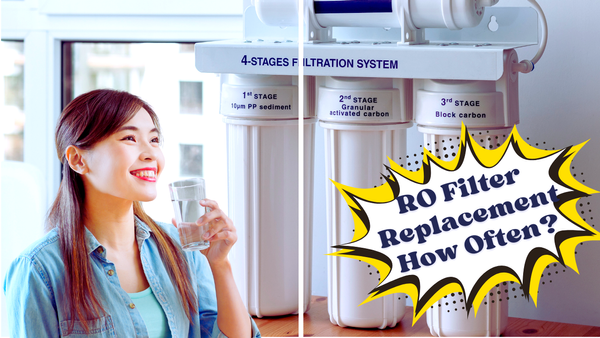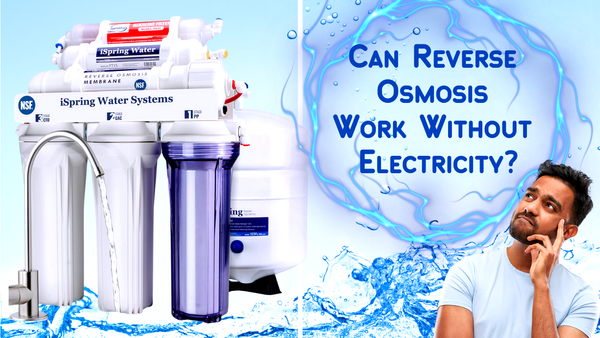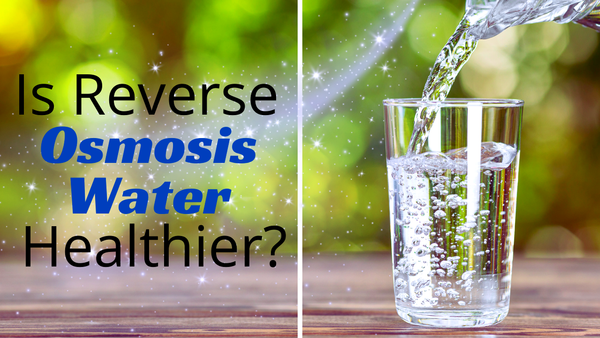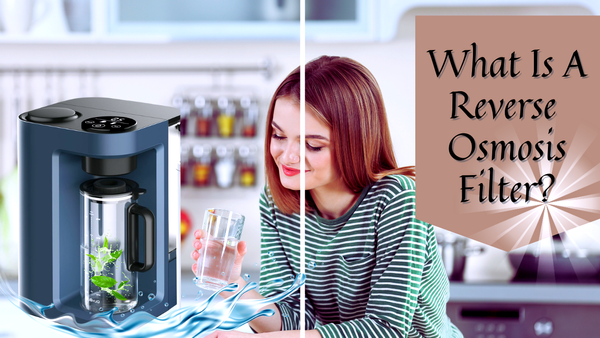Key Takeaways:
- Reverse osmosis water filters can remove beneficial minerals from your drinking water.
- The filtration process can be wasteful, using more water than it produces.
- Maintenance and replacement of filters can be costly and time-consuming.
Reverse osmosis (RO) water filters have gained popularity for their ability to produce purified water. However, they might not be the perfect solution for everyone. While these systems are effective at removing contaminants, they also come with their own set of drawbacks. This article will explore why reverse osmosis water filters might not be your best choice.

The Basics of Reverse Osmosis
Reverse osmosis is a water filtration process that uses a reverse osmosis filter as a critical solution for addressing various water quality issues, such as pollution and high TDS levels, by using a semi-permeable membrane to remove dissolved solids, contaminants, and other substances from water. The process involves applying high pressure to force water through the membrane, leaving impurities behind. This produces pure water but also removes good minerals from the body.
Removal of Beneficial Minerals
One of the biggest complaints about reverse osmosis (RO) filters is that they remove beneficial minerals from the water. Minerals like calcium, magnesium, and potassium are good for the body. When these minerals are stripped away, the water becomes demineralized, which can have health implications over time.
For example, drinking demineralized water can lead to mineral deficiencies if not compensated through other food sources. The World Health Organization has warned about the long-term consumption of demineralized water and said it’s not ideal for a healthy diet.
Wasteful Filtration Process
Another big drawback of reverse osmosis systems is their water usage. The process is wasteful, using more water than it produces. For every gallon of purified water, an RO system can waste up to 4 gallons. This is a concern, especially in areas where water conservation is important.
Waste water from RO systems can contain a high concentration of contaminants that are not suitable for other uses without further treatment, adding to the environmental impact of reverse osmosis filters.
High Maintenance and Replacement Costs
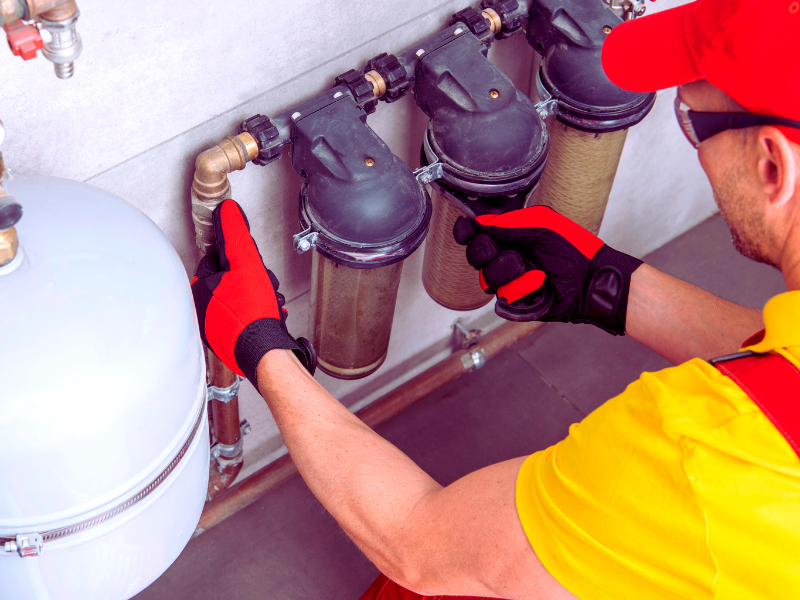
Maintaining a reverse osmosis system is time-consuming and costly. The filters and membranes need to be replaced regularly for the system to work effectively. Depending on your water source, you may need to replace these parts more often, adding to the overall cost.
The maintenance process is complex and requires technical knowledge. If you’re not comfortable with DIY maintenance, hiring a professional will increase the cost of an RO system.
Potential for Bacteria Growth
While reverse osmosis systems remove contaminants, they can also create an environment for bacteria growth. If the storage tank is not cleaned regularly, it can become a breeding ground for bacteria, contaminating the purified water and posing health risks.
To minimize this risk, you must follow a strict maintenance schedule and regularly clean and sanitize the storage tank and other parts. But this adds another layer of complexity to having an RO system.
Impact on Water Pressure

Reverse osmosis systems need a certain water pressure to work effectively. If your water supply has low pressure, the system won’t work as intended, will be less efficient, and will produce less water. Sometimes, you may need to install a booster pump to have enough pressure, which will add to the initial cost.
Low water pressure can also shorten the life of the RO membrane, and you may need to replace it more often. This will add to the system's long-term cost.
Limited Effectiveness Against Certain Contaminants
While reverse osmosis systems remove a wide range of contaminants, it’s not a solution that fits all. Some contaminants like volatile organic compounds (VOCs) and certain pesticides may not be removed by the RO membrane. In such cases, additional filtration methods like activated carbon filters may be needed to make the water safe to drink.
This means relying on an RO system alone may not provide total protection against all contaminants in your water supply. You need to know the contaminants in your water and choose a filtration system that addresses all your needs.
Energy Consumption
Reverse osmosis systems are energy-hungry, especially if they require additional components like booster pumps to work effectively. The energy consumption of an RO system will add to your utility bills and make it less economical in the long run.
And the environmental impact of increased energy consumption should not be ignored. If you’re concerned about your carbon footprint, you may want to consider more energy-efficient water filtration options.
Taste and Quality of Water
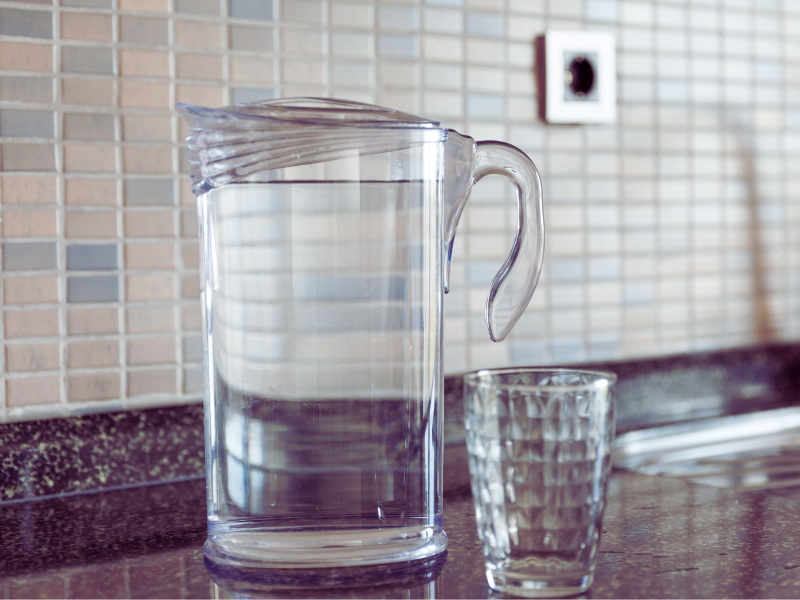
While reverse osmosis water is known for its purity, some people find the taste of demineralized water flat or unpalatable. Tap water, on the other hand, may contain impurities that affect flavor, but it is generally safe to drink in many regions. The removal of minerals that give water its natural taste can result in a bland taste that not everyone will like.
If you like the taste of mineral-rich water, alternatives like spring water or water treated with another filtration method may be more to your liking. You need to consider your personal preference when choosing a water filtration system.
Storage and Space Requirements
Reverse osmosis systems require a lot of space for installation. The system has multiple components like pre-filters, RO membrane, storage tank, and post-filters that need to be placed under your sink or in another area.
If you have limited space in your home, finding a spot for the RO system can be a challenge. The storage tank will take up valuable cabinet space, which can be a concern for those with smaller kitchens.
Environmental Impact
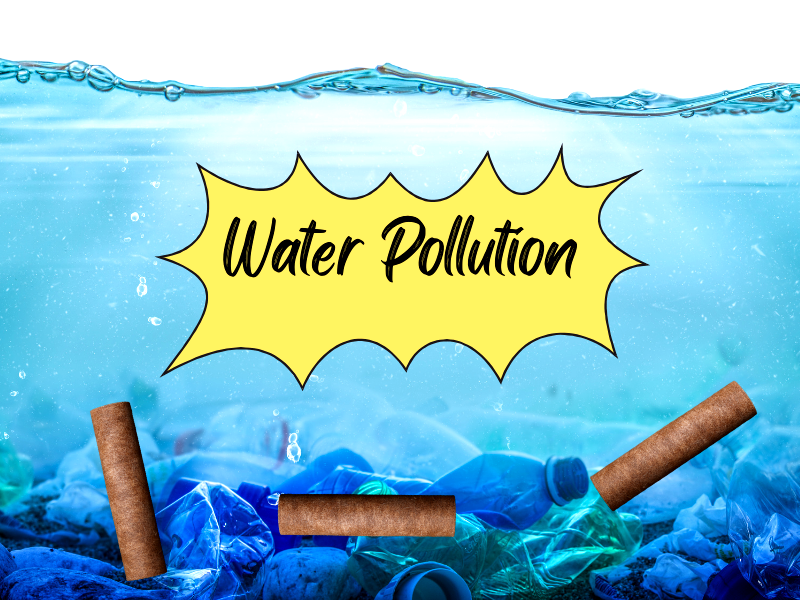
The environmental impact of reverse osmosis systems goes beyond water waste and energy consumption. The production and disposal of replacement filters and membranes contribute to plastic waste which can have long-term environmental effects.
The wastewater generated by RO systems can contain high levels of contaminants which can be harmful if not managed properly. You need to consider the broader environmental impact of having an RO system and look for more sustainable water filtration options if possible.
Alternatives to Reverse Osmosis
If you’re concerned about the downsides of reverse osmosis systems, there are several other water filtration methods to consider. Activated carbon filters for example remove chlorine, VOCs, and other contaminants while retaining beneficial minerals. These filters are more energy efficient and produce less wastewater.
Another option is a water distillation system which uses thermal energy to purify water. Distillation also removes minerals but can be combined with a remineralization filter to add back essential minerals to the water. This way you get purified water without the downsides of demineralization.
Health Implications of Demineralized Water
Drinking demineralized water for a long period can have health risks. Lack of essential minerals like calcium and magnesium can lead to deficiency which can affect bone health and overall well-being. You need to make sure that your diet provides enough minerals if you decide to drink demineralized water.
In some cases, adding minerals back into the water through a remineralization filter can help minimize these health risks. But this adds another layer of complexity and cost to your water filtration system.
Cost Considerations
The initial cost of buying and installing a reverse osmosis system is expensive. The ongoing cost of replacement filters, membranes, and potential maintenance services can add up over time. You need to consider these costs when deciding if an RO system is for you.
Comparing the cost of other water filtration methods can help you make a better decision. In some cases, a cheaper filtration system can provide good enough water quality without the high cost of reverse osmosis.
Water Hardness and RO Systems
Reverse osmosis systems remove dissolved minerals like calcium and magnesium, which makes water hard. But if your water supply is very hard, the RO membrane can get clogged faster and need more frequent replacement.
In such cases, using a water softener with the RO system can help extend the life of the membrane and improve overall efficiency. But this adds to the complexity and cost of your water filtration setup.
Impact on pH Levels
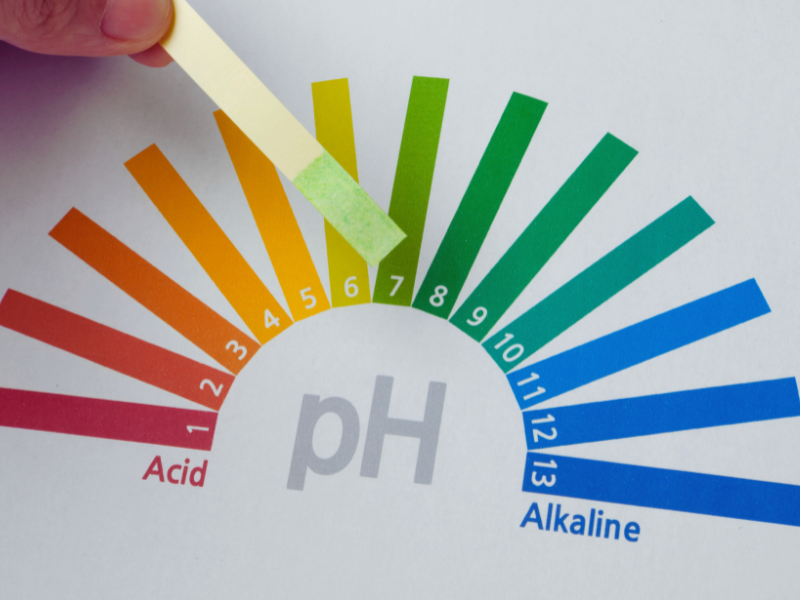
Reverse osmosis water is acidic and has a lower pH level. While this is not harmful at all, some people prefer to drink water with a neutral or slightly alkaline pH. If you’re concerned about the acidity of RO water, you can use an alkaline filter to raise the pH level.
Remember the pH level of your drinking water can affect its taste and potential health benefits. Know your preference and need to choose the right water filtration system.
Bottled Water vs. RO Water
Many people opt for bottled water as an alternative to reverse osmosis water. While bottled water is convenient, it has its drawbacks, including environmental impact and cost. The production and disposal of plastic bottles contribute to pollution, and the cost of buying bottled water can add up over time.
Comparing the pros and cons of bottled water and RO water can help you make a better decision about your drinking water source. In some cases, a combination of filtration methods and occasional bottled water use can be the best balance of convenience and sustainability.
The Role of Carbon Filters
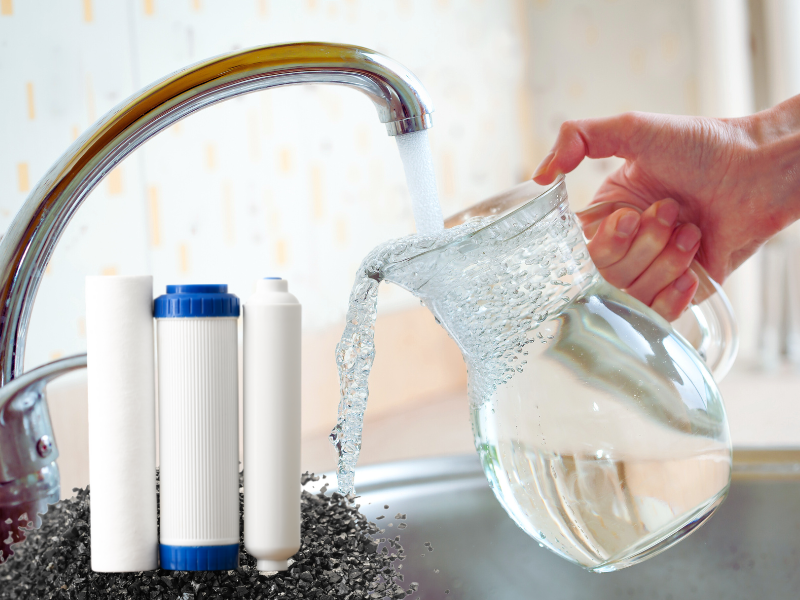
Activated carbon filters are often used with reverse osmosis systems to remove chlorine, VOCs, and other contaminants. These filters can improve the taste and quality of the water while retaining the good minerals. However, they may not be as effective in removing dissolved solids and other contaminants as the RO membrane.
Know the strengths and limitations of carbon filters to decide if you should use them alone or with an RO system. In some cases, a high-quality carbon filter can provide good enough water quality without the need for reverse osmosis.
Water Quality and Local Regulations
The quality of your water supply can vary significantly depending on your location. Local regulations and water treatment practices can affect the levels of contaminants and minerals in your water. It's essential to test your water and understand its specific characteristics before choosing a filtration system.
In some cases, local water treatment facilities may already provide high-quality water that requires minimal additional filtration. Understanding your water quality can help you avoid unnecessary costs and complexity in your water filtration setup.
Summary
Reverse osmosis water filters are popular for producing purified water but not for everyone. Removal of good minerals, wasteful filtration process, high maintenance cost, and bacteria growth are some of the drawbacks to consider. Also, the impact on water pressure, energy consumption, and environmental footprint can make the RO system less appealing. Try alternative filtration methods and know your water quality needs to make a better decision for your water filtration solution. To keep up with the latest water filter tips and offers, subscribe to our newsletter today!
FAQ
What are the drawbacks of reverse osmosis water filters?
Reverse osmosis water filters remove good minerals from the water, are wasteful in terms of water usage, need regular maintenance and replacement of filters, can create an environment for bacteria growth, and are not effective against all contaminants.
Are there alternatives to RO systems?
Yes, there are several alternatives to RO systems including activated carbon filters, water distillation systems, and water softeners. Each has its strengths and limitations so you need to choose the one that fits your water quality needs.
How can I get essential minerals in my drinking water?
If you use a reverse osmosis system, you can add a remineralization filter to put back the essential minerals like calcium and magnesium in the water. Or you can get your minerals from food sources or use a different filtration method that retains good minerals.
